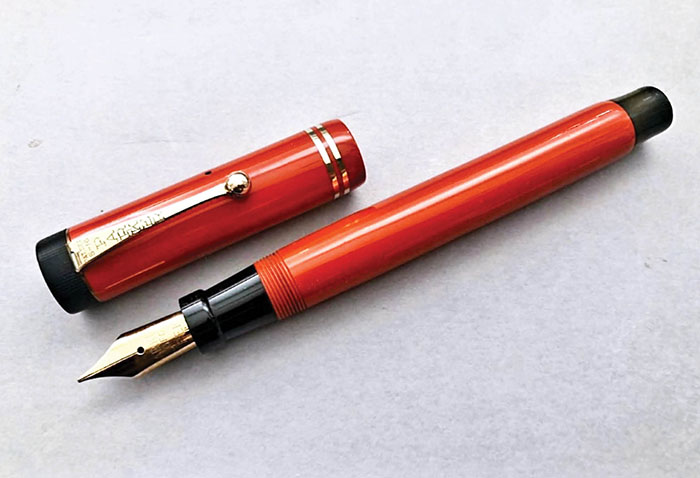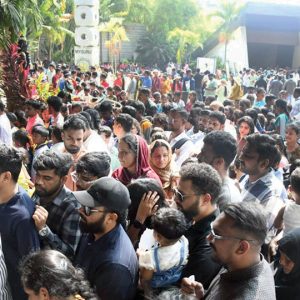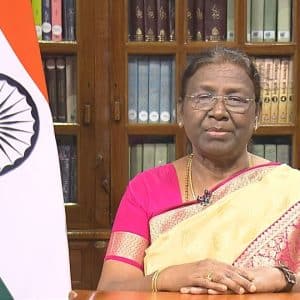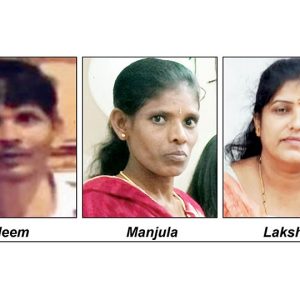By Dr. K. Javeed Nayeem, MD
The recent statement from Ayub Khan, the new Chairman of Karnataka Exhibition Authority (KEA) that henceforth, all exhibitions, of all kinds in the city, would be held only in the Dasara Exhibition Grounds, should be welcomed by all right-thinking Mysureans. I say this because, a good many exhibitions of different kinds are now being held in our city, almost all through the year, either at the Maharaja’s College Grounds or the Scouts and Guides Grounds.
Although both these locations are very conveniently placed with good road accessibility, the exhibitions themselves are extremely unsafe because all the stalls are invariably closely huddled, next to one another, completely wrapped in cloth and every other kind of highly combustible material. In the event of a fire or even a stampede, they can become terrible death-traps, a fact to which no one seems to be paying much attention.
The bright red buckets of sand, prominently stacked at their entrances, only serve the cosmetic purpose of getting them a legal sanction from the fire safety authorities and to some extent of also reassuring the visitors that their safety has been kept in mind.
I have photographs with me that show how badly rusted some of these buckets are, that they have no bottoms whatsoever, let alone the sand to douse any fire!
The only other ground that is spread over a very wide area, with plenty of escape routes, is the JSS Urban Haat on Ring Road in Hebbal, near the KRS Road junction. It is no doubt very well laid out and safe but because it is way out of the city, most exhibition organisers give it a go by.
On the few occasions that I have gone there, I have found the shop-keepers too complaining that hiring a stall there makes no business sense because of the very sparse footfalls there.
Taking all these factors into consideration, there can be no denying that our Dasara Exhibition Grounds, having been created just for this specific purpose, is the best and safest option for any expo in our city. So, it would be best if the authorities make it mandatory for all exhibition to be held only at this place and I hope they implement this with immediate effect.
Going back a little in time, as the story-teller in me is very prone to, I would like to recount here the history of the Dasara Exhibition in our city. Until very recently, for us Mysureans, an exhibition meant only our now nearly a century-and-a-half-old, Dasara Exhibition which has a very interesting origin and an almost renowned past, although a rather pale and lacklustre present!
A good many of us who have always lived in our city, know very well that this is an annual event that comes every year with the coming of our Dasara festival and which stays on for well over a month, after the festivities are over. It was started in the year 1880 by Sri Chamaraja Wadiyar X, the 23rd Maharaja of Mysore, firstly as a trade and agriculture fair, which later became an expo to showcase the developments, industrial production and handicrafts of the State, to the people.
It was held for a couple of years at what is now the University Oval Grounds, till a special place was created for it at what is now the headquarters of our Fire Force in Saraswathipuram.
It was then shifted to another specially created facility next to our Government Medical College, perhaps in an attempt to bring it closer to the heart of the city. When this happened, the adjoining J.K. Grounds became the location for the industrial fair. In the year 1977, if I am not wrong, when it was felt that the Medical College needed some extra space for expansion, the Dasara Exhibition was moved to where it stands today.

During the days of our childhood and over the years that have long gone by, this exhibition was an event that used to be no less exciting to people from in and around Mysuru than the Mysuru Dasara itself. That was because a good many of the things that we could see or buy there, were things that would just not be available anywhere else for the rest of the year.
If you missed seeing them or buying them for some reason, you’d have to wait almost painfully, for a full year, before being able to set your eyes or hands on them. And, there were dozens of things like this, both big and small, that could become the reason for pleasure or pain, depending on whether you made it to the show or missed it!
From the excellent cotton handloom textiles, towels and bedsheets from the hinterland of Tamil Nadu, or the lightest razais from Rajasthan, to the heaviest and thus warmest quilts from Punjab, there was just no other source to buy them from, than this event. And, for children who were fond of different kind of colourful books, pens, pencils and toys, this was ‘the only place’ because they would otherwise have to be content with their dull counterparts, that were available across the city during the rest of the year.
There used to even be a stall where a bespectacled old man would be sitting hunched over a lathe and deftly making Bakelite pens, of the buyer’s choice of colour and design, on the spot. After he did this, his equally able partner would carefully fit a nib and feeder to it and after dipping it in ink, hand it over to you for a trial.
Based on you feedback, he would then gently polish the nib over a sheet of fine emery paper and hand it back to you for a re-trial till you were satisfied that the thickness of the script suited your preference.
Not just this, he would watch the angle at which you held the pen at the first trial and then suitably grind or bend the nib to make it compatible with your grip! Despite all this painstaking attention to detail, each of these pens under the brand name ‘Rekha’ would come at a cost of rupees five, a princely sum indeed, in those days!
Although, a fountain pen was just out of bounds for me at my age then, I used to be so fascinated by its manufacturing process that this pen shop would be one of my most sought-after destinations at the exhibition, where I would tell my parents to leave me, while they explored the rest of the exhibition.
I still have with me a couple of those hand-crafted pens, used for years, by my father, along with the one that was owned by my grandfather too, although their owners themselves are both long gone now. And, every one of those pens still glides silky smooth, on any paper it touches!
My other favourite haunts at the exhibition were the shop where stamps and coins were sold by a man called Mohan who used to come from Vile Parle East in what was then Bombay, where I would pick up some stamps and coins for my collection. For a now unbelievable price of just fifteen rupees, I picked up a set of the first eight stamps designed by Biman Mullick with their first day cover, issued by Bangladesh, when it was so painfully born in the year 1971.
This visit would be closely followed by a long stop at the air-gun shooting stall, where as a very young boy, I would love to show off my marksmanship in blasting the colourful balloons, cheered by an admiring crowd around!
After this, it was time to head to the Mysore Paper Mills stall from Bhadravathi, in the company of my parents, where we would buy a full year’s requirement of writing paper and notebooks. Although the latter, with their Bison head logo, would be very dull and unimpressive in appearance, I would be happy to have them because it had been very effectively impressed on me that in quality, they were far superior to the colourful ones of other brands.
The next stop would be the Mysore Sandal Soap stall, almost next-door, where we would pick up a full year’s supply of soaps and toiletries. The only excitement for me here was the free gift they would always give, of a small booklet, with ten sheets of paper coated with sandal soap, which one could carry in the pocket while travelling. It is a different matter that in those days, I needed to be reminded, prodded, coaxed and cajoled into washing my hands with plain water, let alone with soap!
The last stop, at least for me, was the giant working model of the Sharavathi Hydro-Electric Power Station, where the entire lush Sharavathi valley was recreated in plaster, with the blue river flowing in the deep green gorge. I was heart-broken when as a post-graduate medical student, I stood and watched helplessly as this structure, which had been a source of enormous wonderment and joy to me as a child, was dismantled, when the Mysore Medical College started eating into the exhibition grounds, in slow phases.
When this personally painful turn of events came, I was a resident of the post-graduate men’s hostel that stands there now, amidst the ruined remnants of the old exhibition stalls but thankfully under the same old, lush mahogany trees, whose brown, woody fruits I have collected as keepsakes and preserved, even to this day!
e-mail: [email protected]








Recent Comments